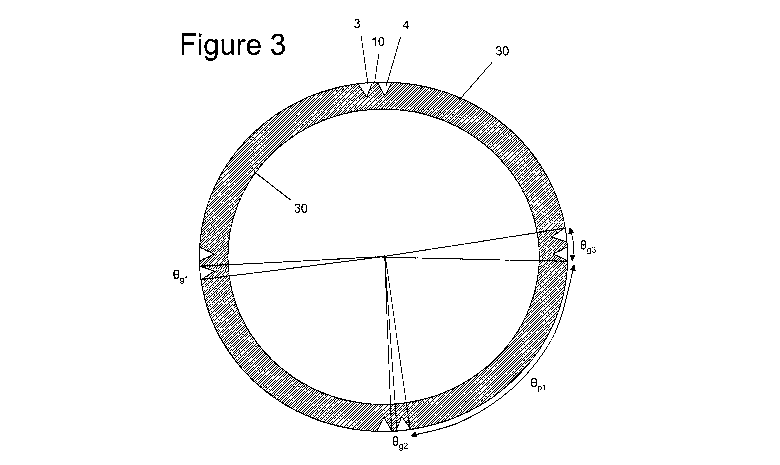Une partie des informations de ce site Web a été fournie par des sources externes. Le gouvernement du Canada n'assume aucune responsabilité concernant la précision, l'actualité ou la fiabilité des informations fournies par les sources externes. Les utilisateurs qui désirent employer cette information devraient consulter directement la source des informations. Le contenu fourni par les sources externes n'est pas assujetti aux exigences sur les langues officielles, la protection des renseignements personnels et l'accessibilité.
L'apparition de différences dans le texte et l'image des Revendications et de l'Abrégé dépend du moment auquel le document est publié. Les textes des Revendications et de l'Abrégé sont affichés :
| (12) Demande de brevet: | (11) CA 2757111 |
|---|---|
| (54) Titre français: | CHARGE EXPLOSIVE |
| (54) Titre anglais: | EXPLOSIVE CHARGE |
| Statut: | Réputée abandonnée et au-delà du délai pour le rétablissement - en attente de la réponse à l’avis de communication rejetée |
| (51) Classification internationale des brevets (CIB): |
|
|---|---|
| (72) Inventeurs : |
|
| (73) Titulaires : |
|
| (71) Demandeurs : |
|
| (74) Agent: | MBM INTELLECTUAL PROPERTY AGENCY |
| (74) Co-agent: | |
| (45) Délivré: | |
| (86) Date de dépôt PCT: | 2010-03-26 |
| (87) Mise à la disponibilité du public: | 2010-10-07 |
| Licence disponible: | S.O. |
| Cédé au domaine public: | S.O. |
| (25) Langue des documents déposés: | Anglais |
| Traité de coopération en matière de brevets (PCT): | Oui |
|---|---|
| (86) Numéro de la demande PCT: | PCT/GB2010/050514 |
| (87) Numéro de publication internationale PCT: | WO 2010112900 |
| (85) Entrée nationale: | 2011-09-29 |
| (30) Données de priorité de la demande: | ||||||
|---|---|---|---|---|---|---|
|
L'invention concerne une charge explosive (1) comprenant une douille allongée (2) présentant sur sa longueur des rainures allongées (3, 4), chaque rainure réduisant localement l'épaisseur de la douille. Les rainures sont réparties en deux groupes ou plus autour de la circonférence de la douille, et l'espacement bord à bord entre chaque paire adjacente de rainures dans un groupe est inférieur à l'espacement bord à bord entre chaque paire de groupes adjacents. La détonation entraîne la rupture de la douille au niveau d'une paire de rainures dans l'un des groupes et forme un fragment de matière entre la paire de rainures, le fragment coupant un obstacle (28).
An explosive charge (1) comprising an elongate casing (2) with elongate
grooves (3,4) miming along the casing,
each groove locally reducing the thickness of the casing. The grooves are
distributed in two or more groups around the circumference
of the casing and the edge-to-edge spacing between each adjacent pair of
grooves in a group is less than the edge-to-edge
spacing between each pair of adjacent groups. Detonation causes the casing to
break at a pair of grooves in one of the groups and
form a fragment from material between the pair of grooves, the fragment
cutting an obstacle (28).
Note : Les revendications sont présentées dans la langue officielle dans laquelle elles ont été soumises.
Note : Les descriptions sont présentées dans la langue officielle dans laquelle elles ont été soumises.

2024-08-01 : Dans le cadre de la transition vers les Brevets de nouvelle génération (BNG), la base de données sur les brevets canadiens (BDBC) contient désormais un Historique d'événement plus détaillé, qui reproduit le Journal des événements de notre nouvelle solution interne.
Veuillez noter que les événements débutant par « Inactive : » se réfèrent à des événements qui ne sont plus utilisés dans notre nouvelle solution interne.
Pour une meilleure compréhension de l'état de la demande ou brevet qui figure sur cette page, la rubrique Mise en garde , et les descriptions de Brevet , Historique d'événement , Taxes périodiques et Historique des paiements devraient être consultées.
| Description | Date |
|---|---|
| Le délai pour l'annulation est expiré | 2015-03-26 |
| Demande non rétablie avant l'échéance | 2015-03-26 |
| Réputée abandonnée - omission de répondre à un avis sur les taxes pour le maintien en état | 2014-03-26 |
| Inactive : Réponse à l'art.37 Règles - PCT | 2012-01-06 |
| Inactive : Page couverture publiée | 2011-11-29 |
| Inactive : CIB attribuée | 2011-11-17 |
| Inactive : Demande sous art.37 Règles - PCT | 2011-11-17 |
| Inactive : Notice - Entrée phase nat. - Pas de RE | 2011-11-17 |
| Demande reçue - PCT | 2011-11-17 |
| Inactive : CIB en 1re position | 2011-11-17 |
| Inactive : CIB attribuée | 2011-11-17 |
| Inactive : CIB attribuée | 2011-11-17 |
| Exigences pour l'entrée dans la phase nationale - jugée conforme | 2011-09-29 |
| Demande publiée (accessible au public) | 2010-10-07 |
| Date d'abandonnement | Raison | Date de rétablissement |
|---|---|---|
| 2014-03-26 |
Le dernier paiement a été reçu le 2013-03-13
Avis : Si le paiement en totalité n'a pas été reçu au plus tard à la date indiquée, une taxe supplémentaire peut être imposée, soit une des taxes suivantes :
Veuillez vous référer à la page web des taxes sur les brevets de l'OPIC pour voir tous les montants actuels des taxes.
| Type de taxes | Anniversaire | Échéance | Date payée |
|---|---|---|---|
| Taxe nationale de base - générale | 2011-09-29 | ||
| TM (demande, 2e anniv.) - générale | 02 | 2012-03-26 | 2011-09-29 |
| TM (demande, 3e anniv.) - générale | 03 | 2013-03-26 | 2013-03-13 |
Les titulaires actuels et antérieures au dossier sont affichés en ordre alphabétique.
| Titulaires actuels au dossier |
|---|
| CHEMRING ENERGETICS UK LIMITED |
| Titulaires antérieures au dossier |
|---|
| COLIN DOUGLAS YOUNG |